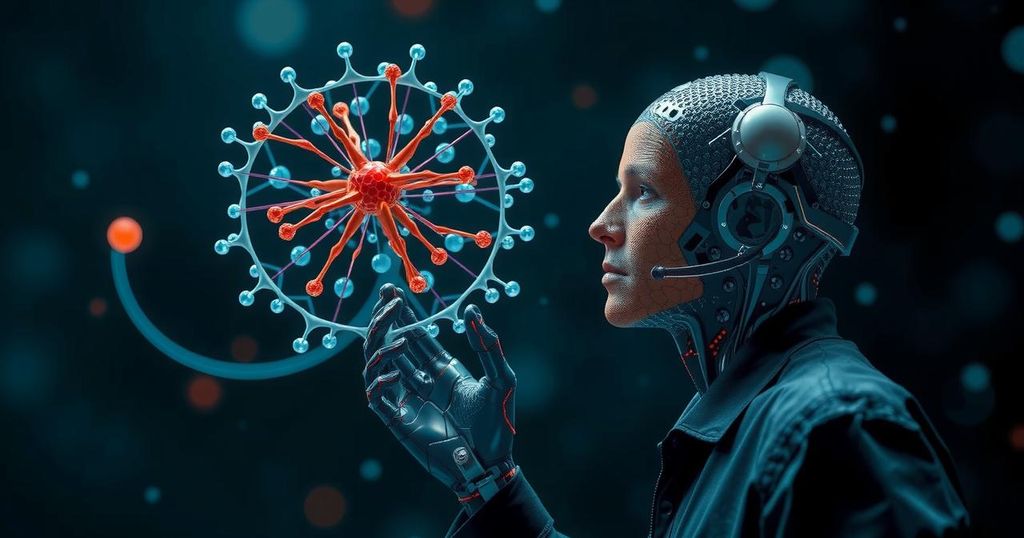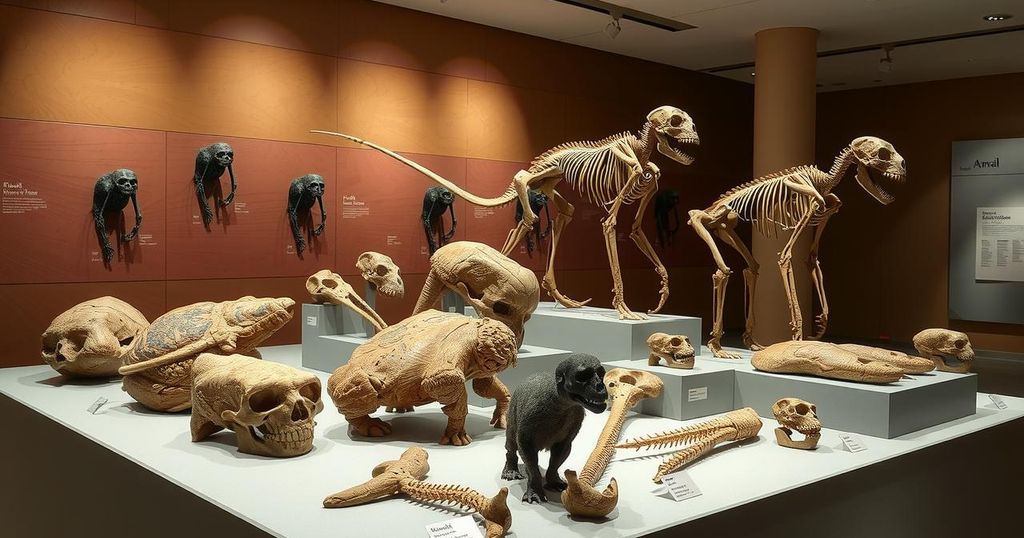Unveiling Life’s Secrets: The Intersection of AI and Biological Coding
The Nobel Prizes underscored the crucial role of artificial intelligence in biological science, particularly through the groundbreaking work of AlphaFold 2, which elucidates protein structures. This interplay reveals the coding that governs both life and AI, initiating a deeper understanding of our biological essence. In exploring the similarities between AI and life’s coding systems, we embark on a journey toward comprehending our universe more fully.
This year’s Nobel Prizes celebrated the remarkable fusion of artificial intelligence and basic biological sciences, showcasing how technology can illuminate the mysteries of life itself. Among the breakthroughs was AlphaFold 2, developed by Demis Hassabis, John Jumper, and their team at Google, which revolutionized our understanding of protein structures. By analyzing over 200,000 previously studied proteins, AlphaFold 2 cracked the code of how amino acids fold into complex three-dimensional shapes, forging new paths in vaccine design and pharmaceutical development.
Meanwhile, the narrative of life’s coding recalls ancient beginnings—simple RNA strands evolving into the intricate DNA machinery we recognize today. Just as coding determines life at the molecular level, it also parallels the algorithms that dominate today’s AI systems. This impressive development in AI reflects a deeper philosophical truth: that beneath all complexity lies a fundamental simplicity.
As the clock of evolution ticks, it’s fascinating to realize that humans, while appearing markedly different from simpler beings, share their core molecular makeup. Our neural networks, so much more refined and intricate in their connections, symbolize the height of biological coding. They grant us unique abilities in language, music, and reasoning, unlike any other creature.
The evolution of the universe itself mirrors those fundamental principles, governed by time, chance, and coding. Stars ignite and expire, giving birth to increasingly complex matter—an echo of the coding that underpins all forms of life. AI, initially an extension of human intellect, is now turning inward to help us comprehend our own universe, reinforcing the bond shared among biology, physics, and artificial intelligence. Herein, lies our poetic journey of discovery, as we navigate through the threads of existence woven together by coding.
The intersection of artificial intelligence and biological sciences has gained unprecedented prominence, particularly in the wake of recent advancements recognized by major award bodies like the Nobel Prize. This synergy reflects not only technological evolution but also a profound understanding of life’s complexities, echoing fundamental biological principles established billions of years ago. AI’s role in unraveling these mysteries provides a fascinating glimpse into the future of science, emphasizing the need for interdisciplinary collaboration in piecing together life’s intricate puzzle.
In summary, the emergence of AI as a pivotal tool in biological research amplifies our understanding of life’s foundational codes, from DNA to proteins. Through breakthroughs like AlphaFold 2, we see the intricate dance of evolution reveal itself, while also recognizing the inherent simplicity that underpins complexity in both nature and technology. The voyage of discovery continues, linking our past, present, and future through the elegant language of coding, where artificial intelligence becomes a companion in our quest to understand the universe itself.
Original Source: niagaranow.com




Post Comment